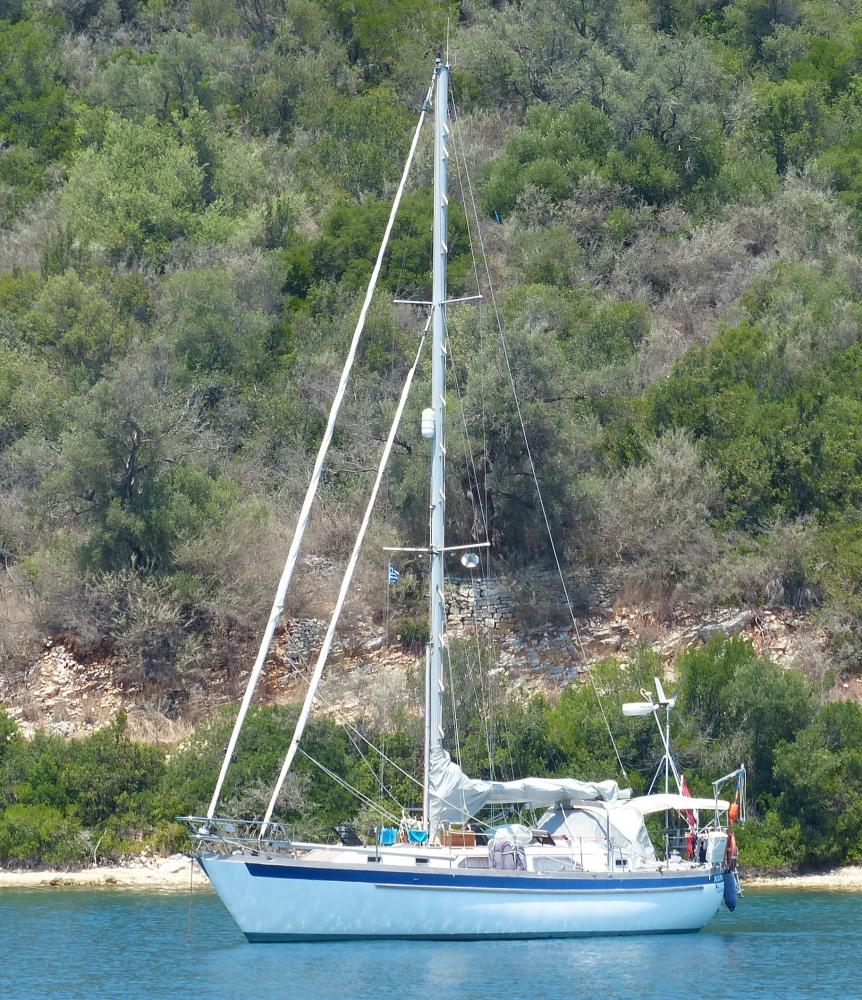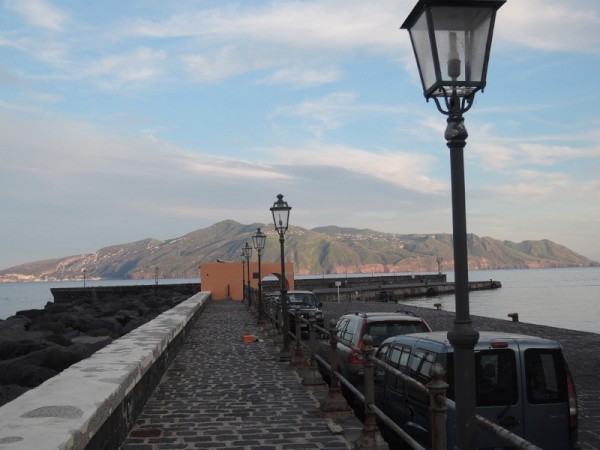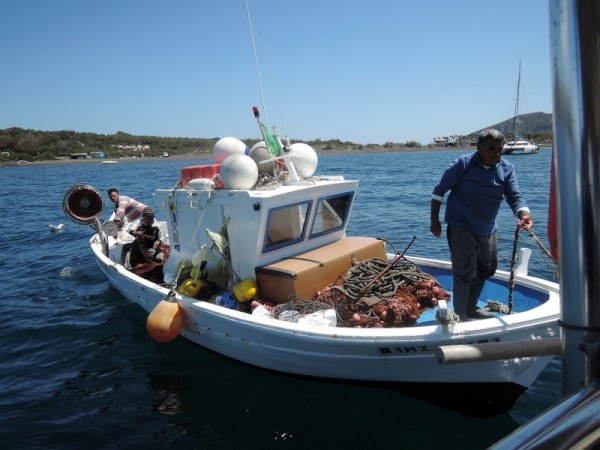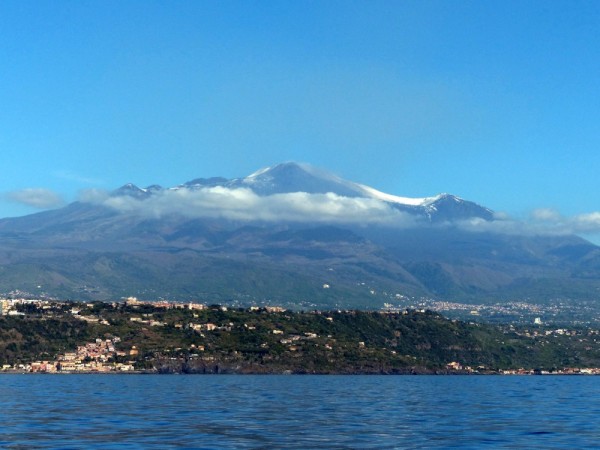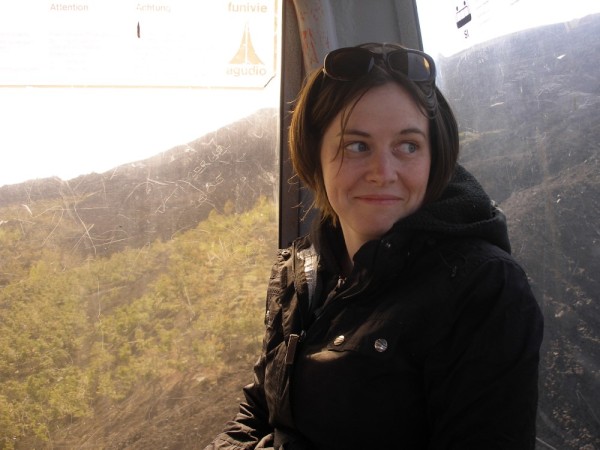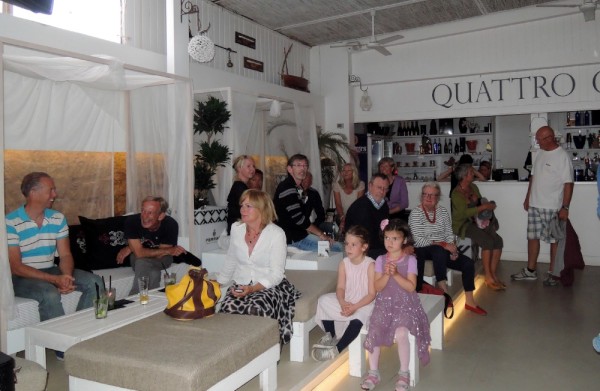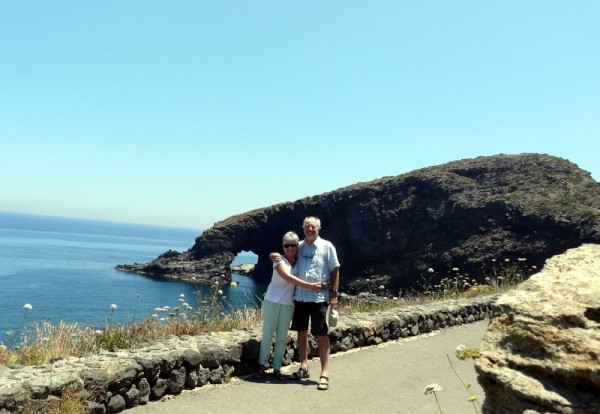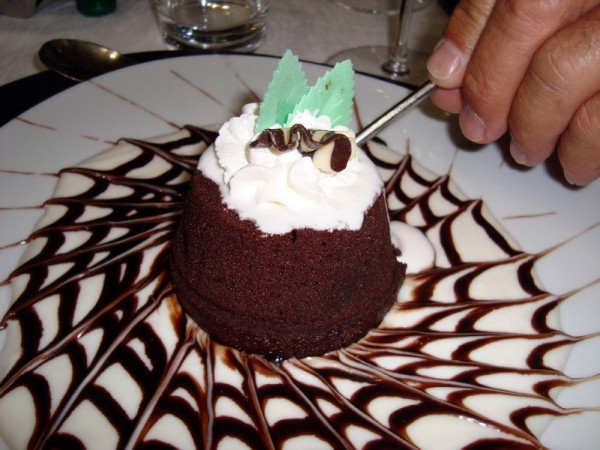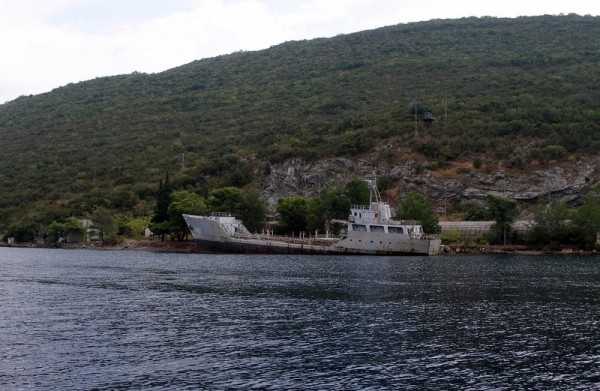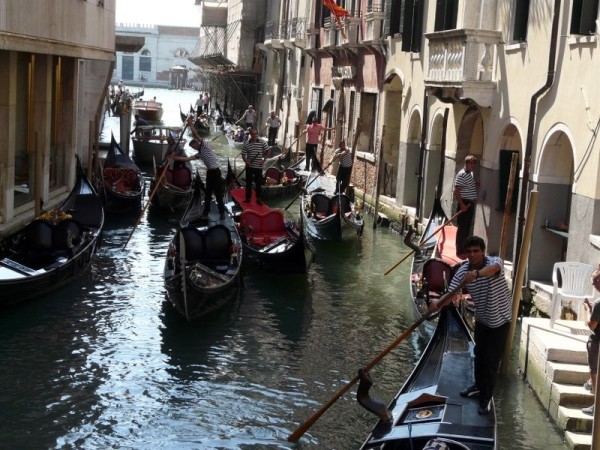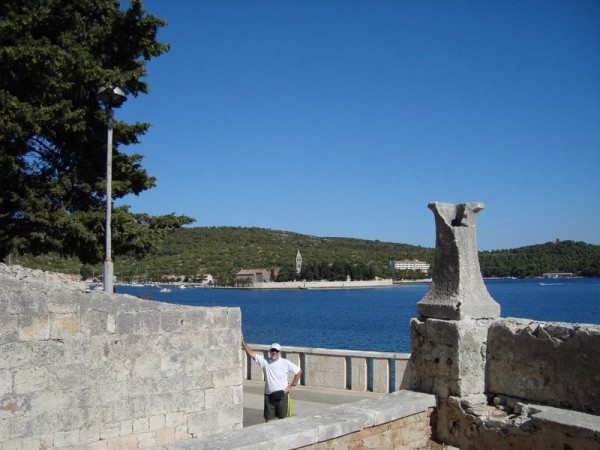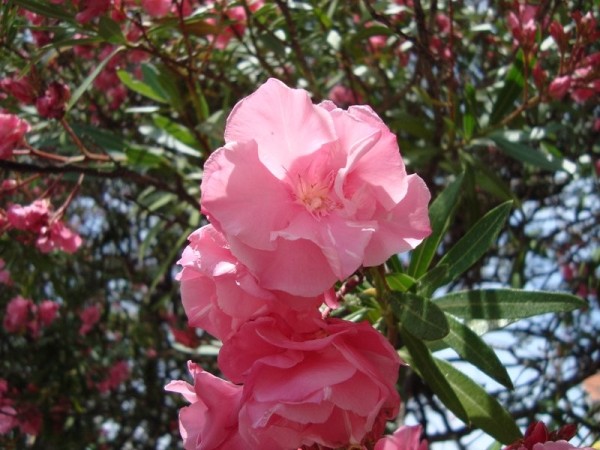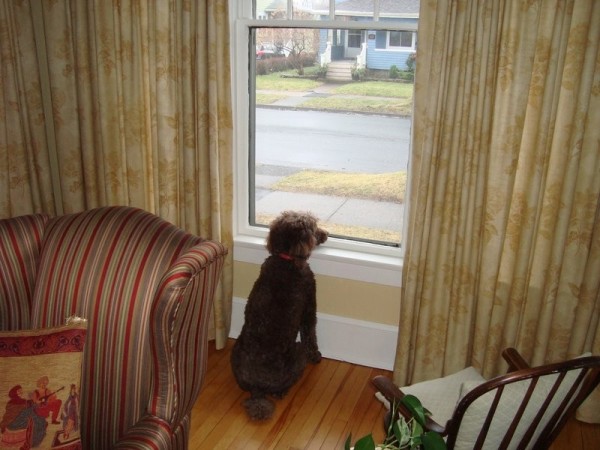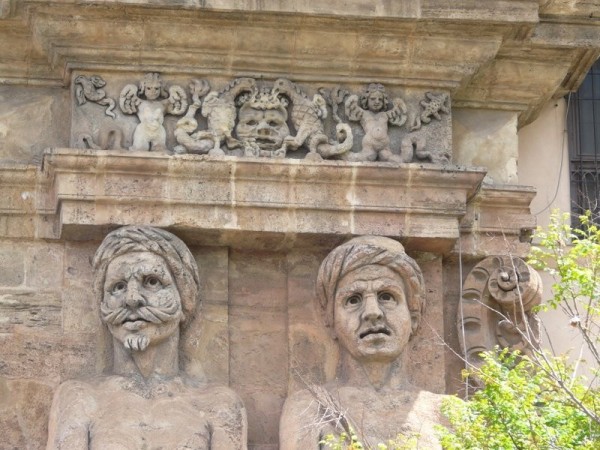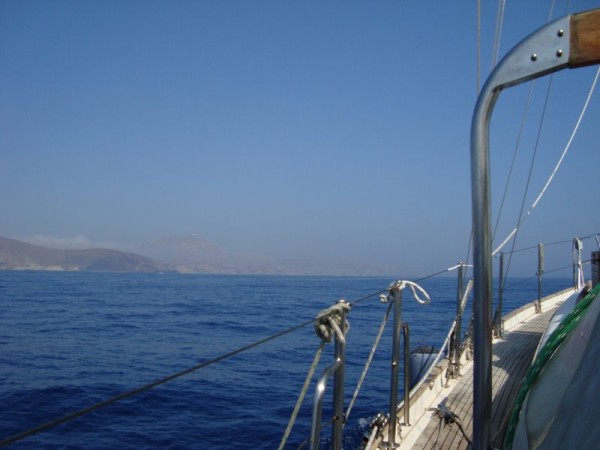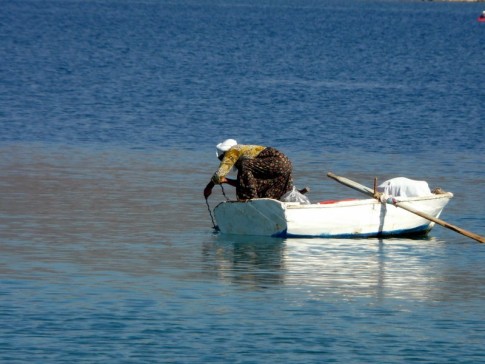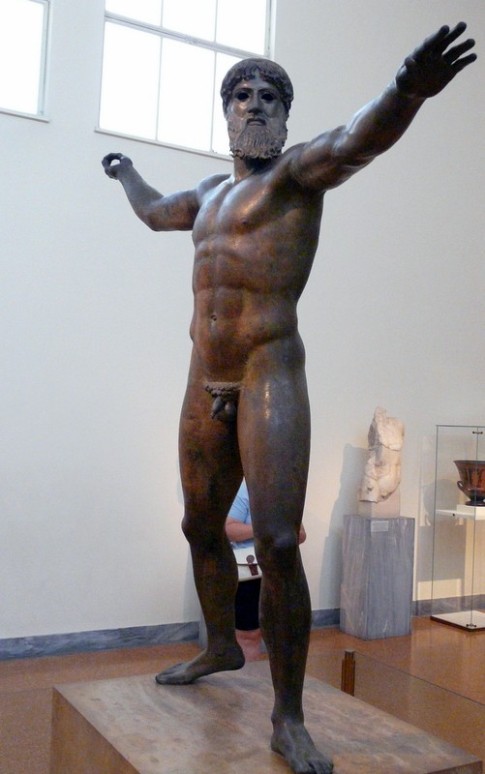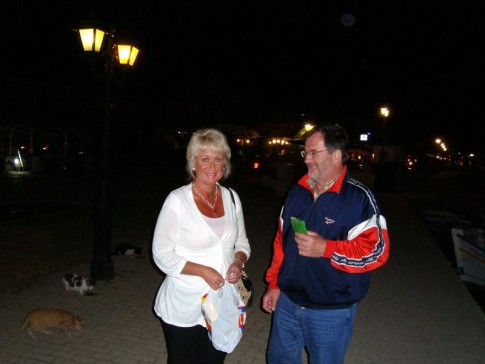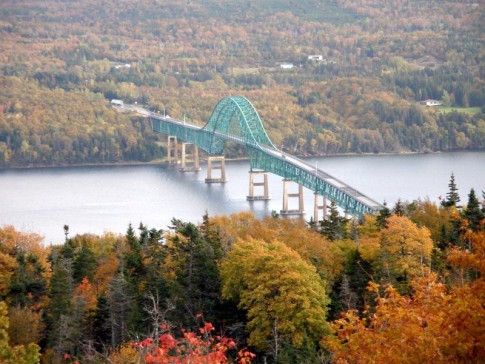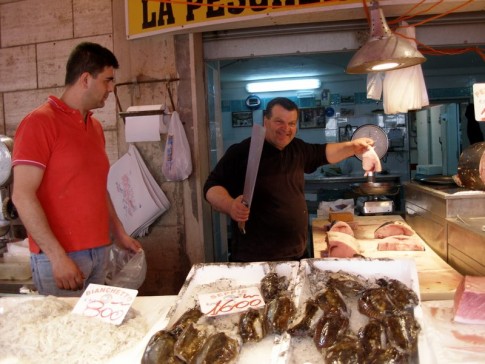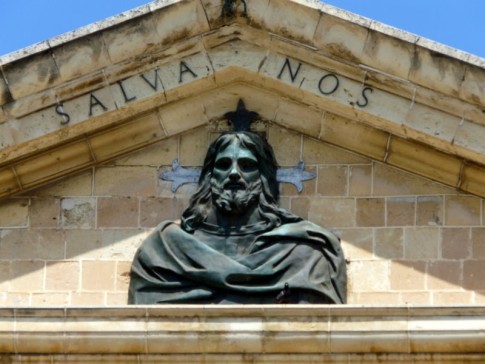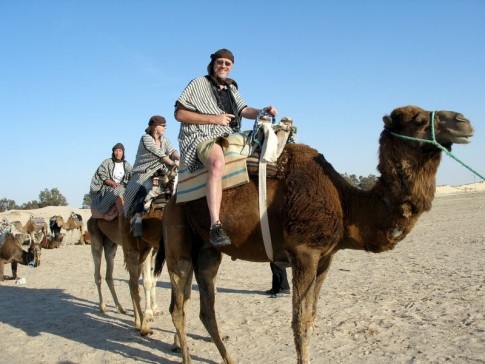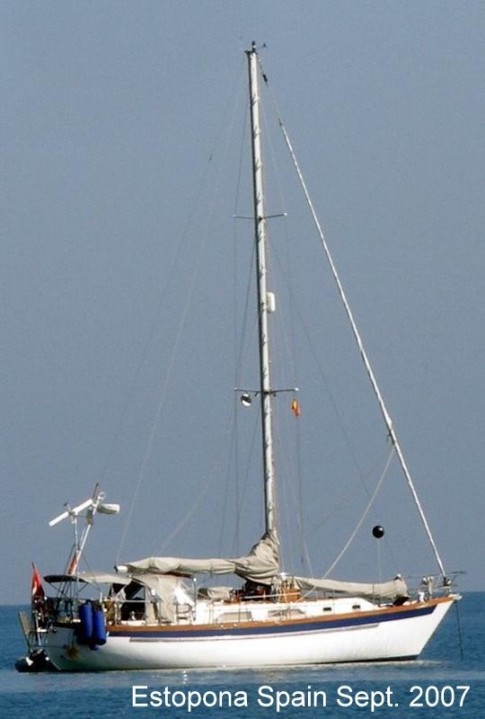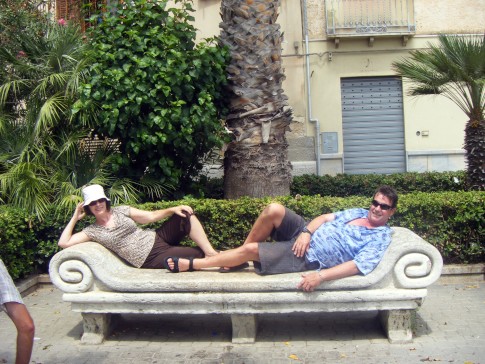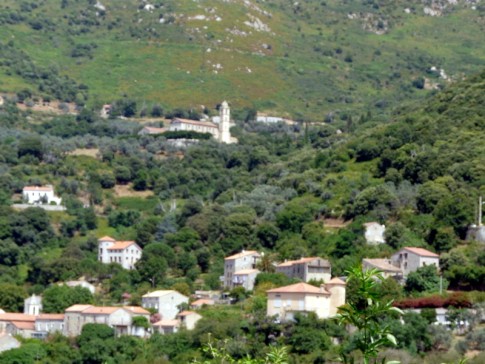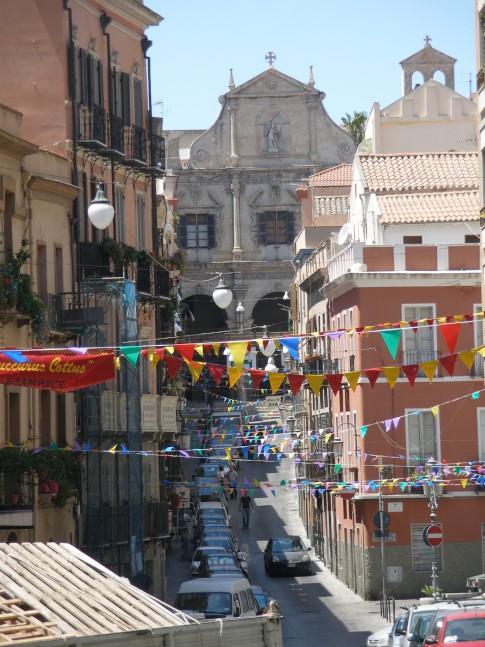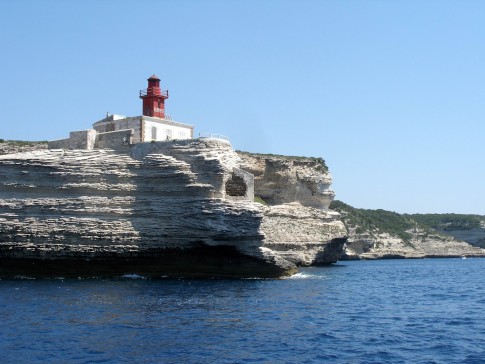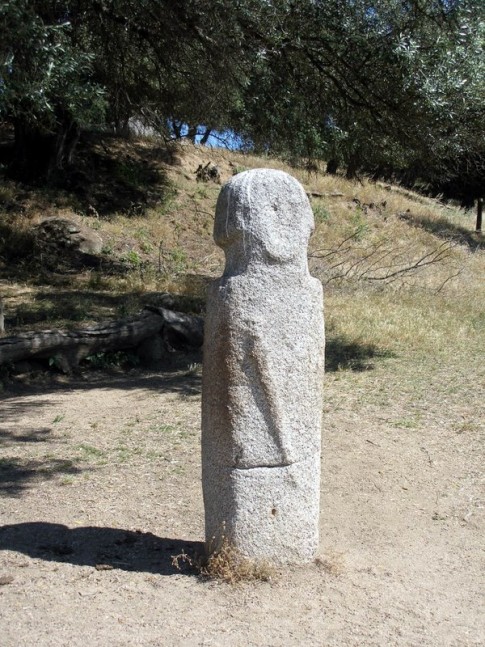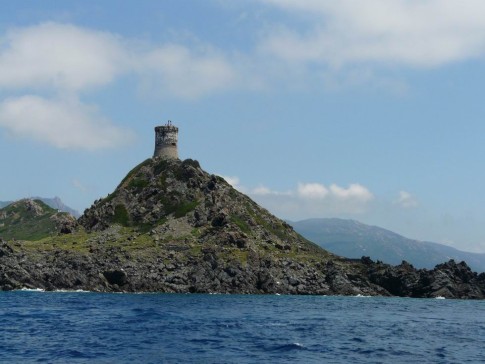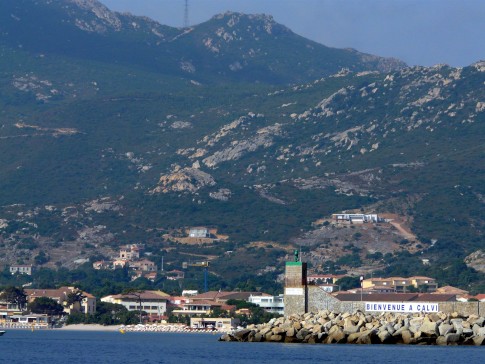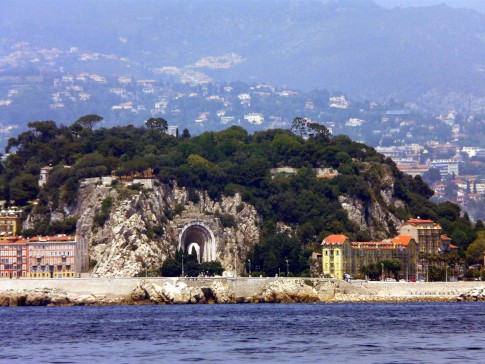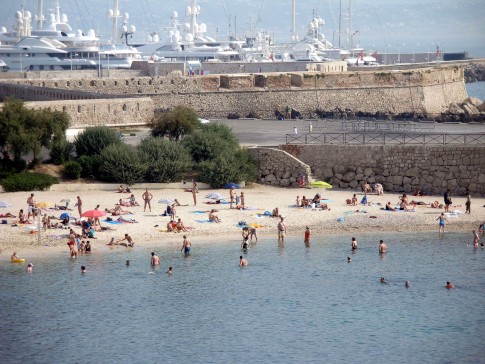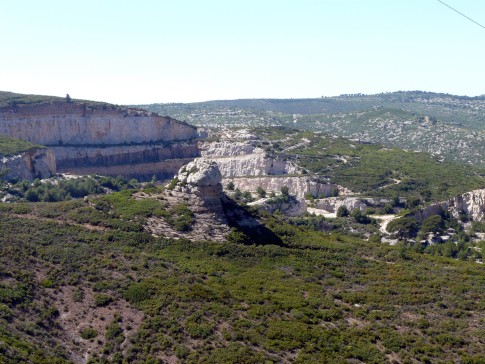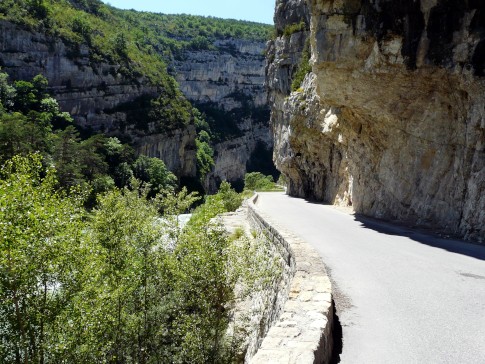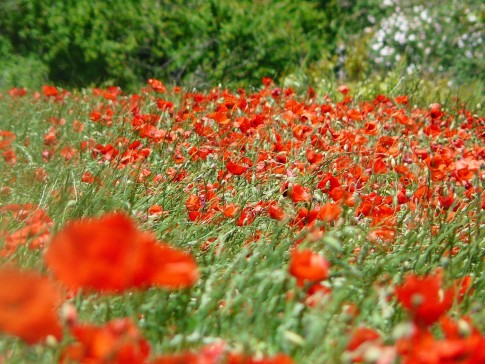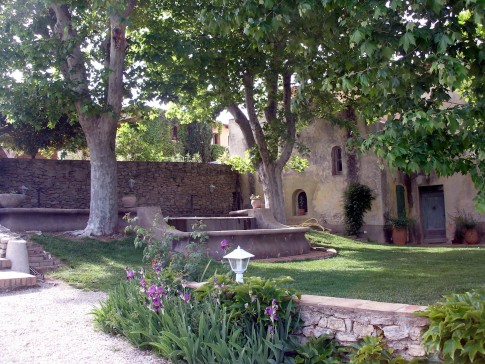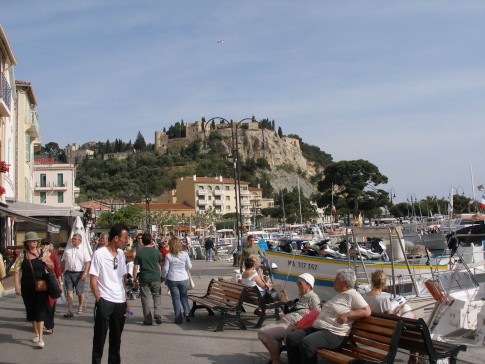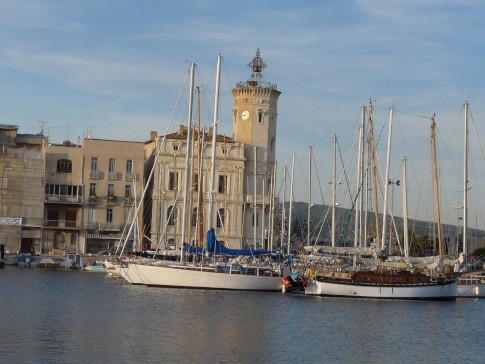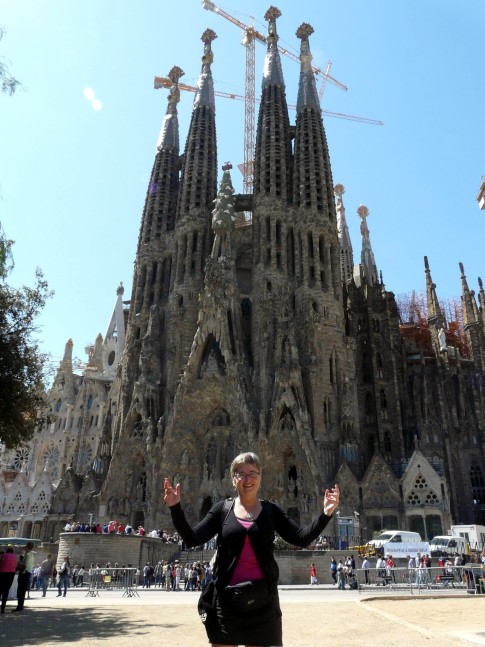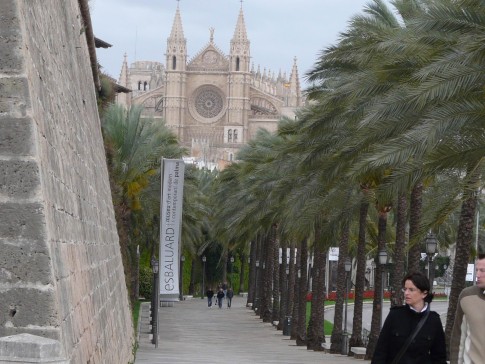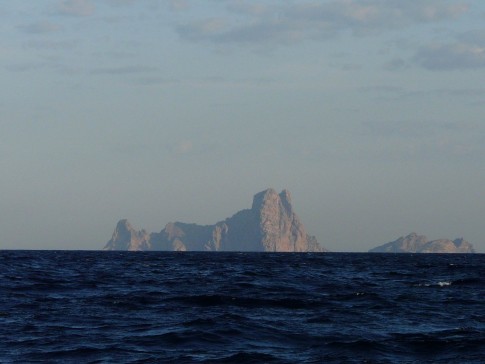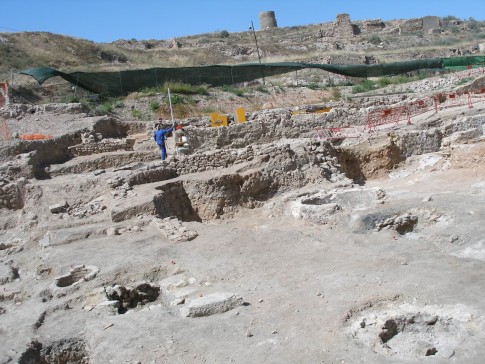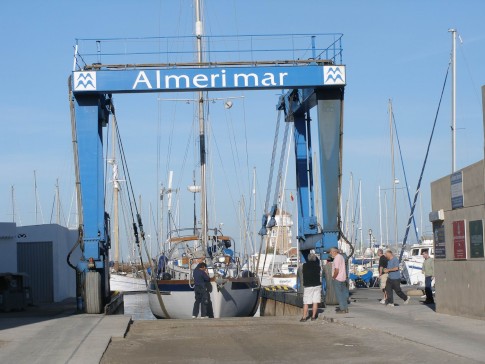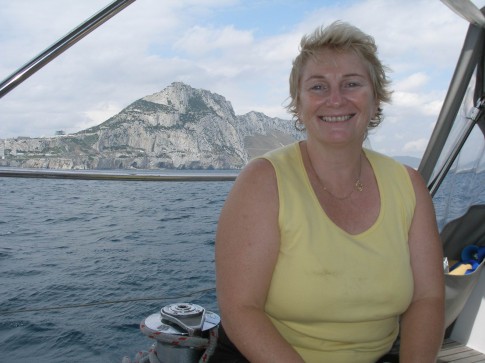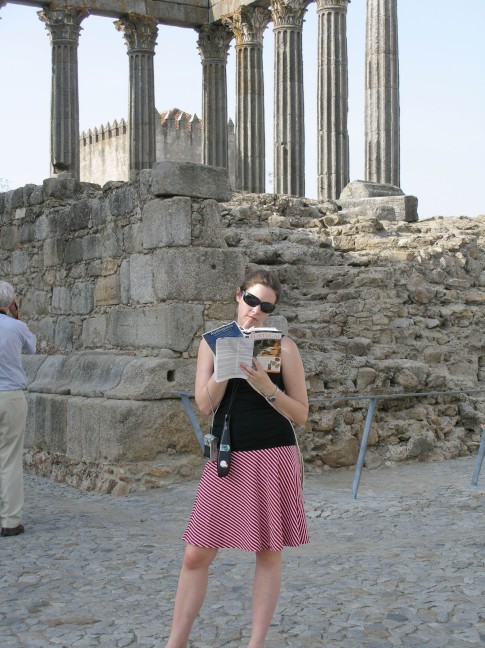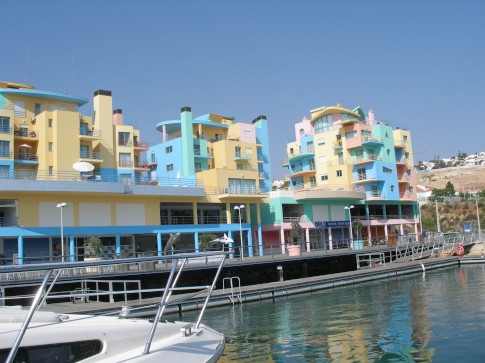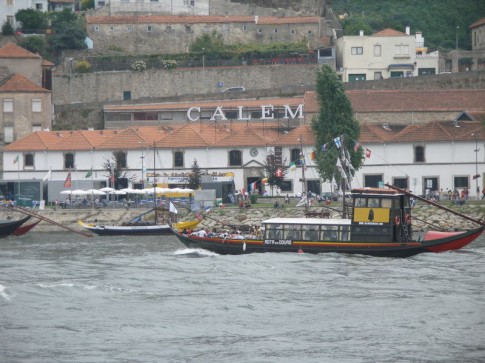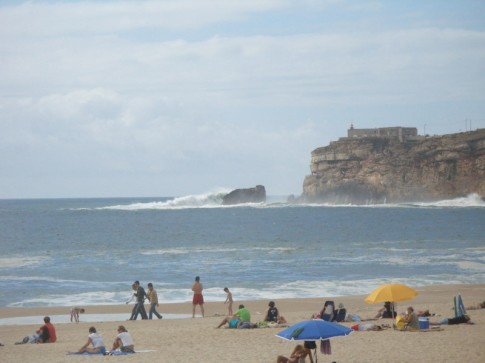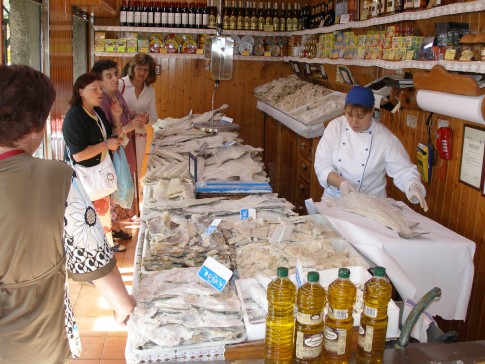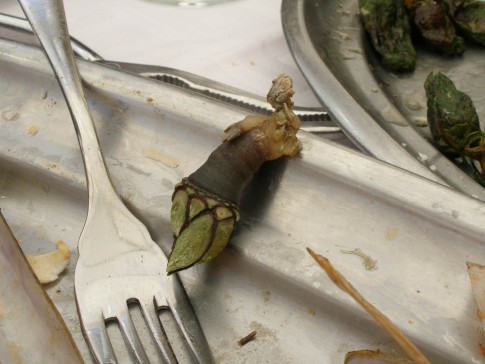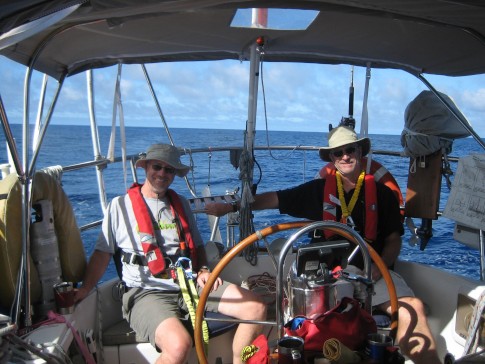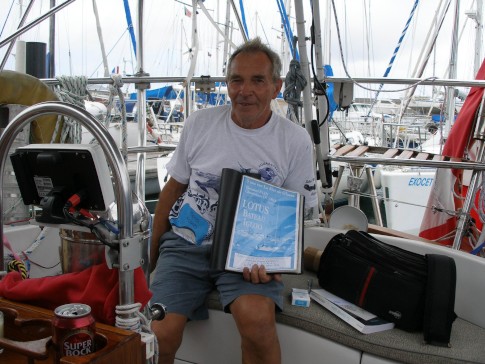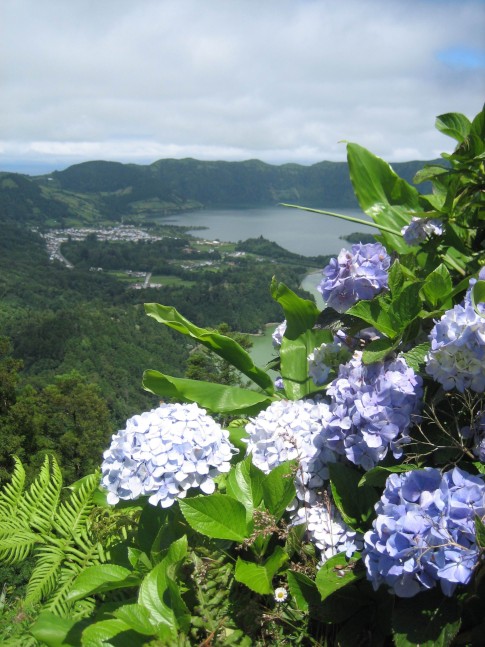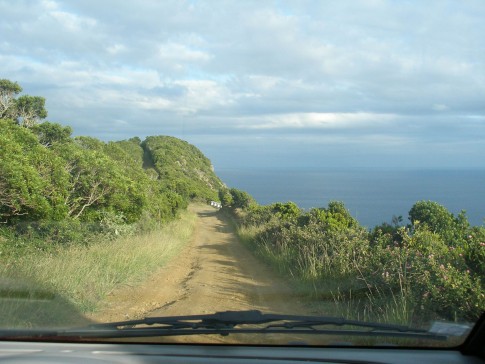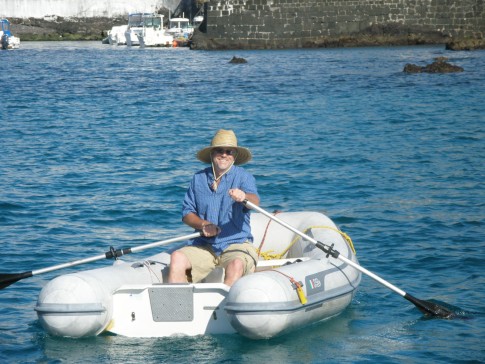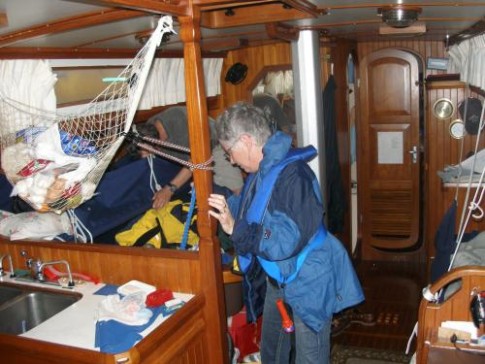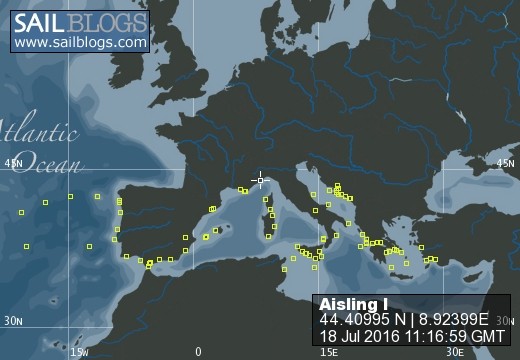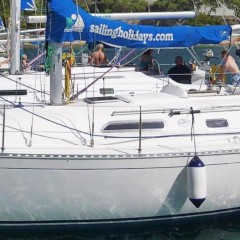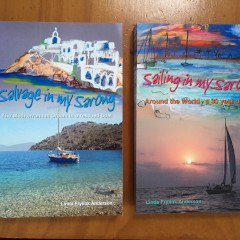
Aisling I
18 July 2016 | Genoa
11 July 2016 | Genoa Italy
04 July 2016 | Genoa
02 July 2016 | Genoa
25 June 2016 | Porto Azzurro Elba
11 April 2016 | Marina di Ragusa
21 March 2016 | Halifax
01 March 2016
14 January 2016
30 September 2015
25 September 2015 | Crotone Italy
18 September 2015 | Erikoussa
10 September 2015 | Preveza
10 September 2015 | Preveza
24 July 2015 | Preveza
20 July 2015 | Varko Bay
13 July 2015 | Vlicho Bay
09 July 2015
03 July 2015 | Preveza Greece
21 June 2015
Malta-Allright!
20 May 2009 | Syracusa
Bonnie and Rick
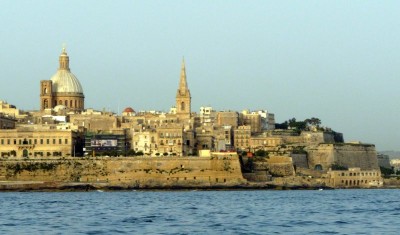
The diminutive nation of Malta has an incredibly rich history. Malta's megalithic temples are the oldest in the world, pre-dating the pyramids of Egypt by 1000 years. The Maltese people are descendants of the ancient Phoenicians and Carthaginians, who colonized the islands between 800-200 BC. Saint Paul was shipwrecked in Malta around AD 60 and converted many of the local people to Christianity during his three-month stay. The Romans, Arabs, Normans and Spanish all left their mark in Malta, and on the Malti language. But perhaps the most famous inhabitants of the island were the Knights of St. John, who arrived in Malta in the 16th century after being evicted from Rhodes by Suleyman the Magnificent. The Knights built the stunning city of Valetta, so well fortified that a Turkish force of 48,000 was unable to defeat roughly 6000 Maltese during the Great Siege of 1565.
The Knights of St. John were a military and religious order who, during the Crusades, played dual roles of fighting infidels and of caring for injured and ill Crusaders along the route to the Holy Land. The Crusaders believed that those who died doing battle with infidels in defense of the Faith would be rewarded in paradise-does this sound vaguely familiar? The hospitals and medical techniques of the Knights of St. John were supposedly leading-edge. In Malta, the Knights were organized in eight "langues", based on the various languages spoken within the order. Each langue has its own auberge and chapel and consequently, Valletta is a treasure-trove of baroque palaces and churches. The Knights remained in Malta until Napoleon ousted them in the 19th century. Napoleon's forces desecrated the churches, melted down precious artwork and carted away shiploads of treasure (much of which was lost when Nelson destroyed Napoleon's fleet). During World War II, Malta was again under siege, suffering 154 consecutive days of bombing in 1942. James remembers that our Uncle Freddie was here during the war and spoke about the beautiful beaches.
The spires and cupolas of Valetta are just a short bus-ride from Msida marina. Our first excursion coincided with the arrival of a mammoth cruise ship and the streets were jammed with people. Even without the temporary bulge caused by the cruise ship passengers (pardon the pun) Malta already has one of the highest population densities of any country in the world, at 1200 people per square kilometer. Since Canada's population density is a whopping three people per square kilometer, you can see why we were feeling a bit claustrophobic. Malta is not a place where it is easy to get away from the madding crowd.
In Valletta, we stumbled across beautiful palazzos, churches and convents everywhere we turned. The upper Barrakka Gardens has a great view over Grand Harbour that provided an idea of the scope of the old fortifications, as well as the extent of modern development in the Valletta area. We had pizza in the square facing St. John's Co-Cathedral ("Co" because the main cathedral is St. Paul's in Mdina). At the door of the cathedral, a notice prohibits the wearing of stiletto heels- not to ensure modest dress (although Malta is reportedly very conservative) but to protect the ornate marble floors. We decided to wait for another day to see the cathedral and of course never did get back- but from the tiny glimpse I caught through an open door, it looked amazing.
Our most enjoyable outing was to Mdina- the medieval walled city that was originally the capital of Malta and that remained the home of the Maltest aristocracy after the Knights built Valetta. Mdina (whose name evolved from the Arabic word for walled city, Medina) is known as the Silent City, since the atmosphere within the walls is almost surreally quiet. In sharp contrast to Valletta, there were very few people on the streets. We visited St. Paul's cathedral and the adjacent cathedral museum (which has some beautiful artwork, including a series of Durer lithographs). The Museum of Natural History, with lots of stuffed birds and animal skeletons, was less exciting. We had tea and chicken pie at the Fontanella Gardens, admired the view over Malta from the terrace and met Roslyn from Kelowna, who had just arrived from Sicily. Her description of Sicily in springtime (lush fields, poppies, genestra and orange blossoms) made us want to rush back to the boat and get moving! Roslyn also told us that she had rated the cannoli at every stop in Sicily and in her opinion the best was at the Pasticerria del Convento in Erice. This assessment will come as no surprise to Roy and Joanne. It's good to know that we've tasted the best cannoli on earth, but a bit depressing to think that we will never find its like again. And stupidly, I forgot to ask her where the second-best cannoli was!
As we walked back through Medina toward the gate, the streets were so empty and quiet that I could almost imagine that we had stepped back into an earlier era. My reverie ended with a jolt when a tall blond American wearing madras shorts came charging out of a side street eating a gelato and shouting into a walkie-talkie. "Rick, do you read me? If you hustle right over here we can get in on the last screening of The Knights of Malta! Rick.. Richard...Rich, come in Rich...". You really can't get very far off the beaten track in Malta.
Our visit to the megaliths at Hajar Qim and Mnajdra was a bit disappointing. With our usual impeccable timing, we'd arrived about a year too late to experience the temples in their natural state. Due to concerns about significant erosion, the temples have been covered by large, tent-like structures- an essential step in the right direction to protect the site for future generations. Unfortunately, the tents give the site all the ambiance of the Miami boat show. Consequently, it was a bit difficult to absorb the fact that we were standing at a site that was nearly 5000 years old, yet had been positioned to exactly align with the rising sun at the spring and fall equinoxes.
A long ride back to the marina on a teeth-rattling, stomach-churning Malta bus was just what we needed to get our sea legs for the passage to Sicily. The Malta buses are legendary, ranging in age from about 50 years old to brand new, with older buses often driven by older drivers and vice versa. Each driver seems to do his own interior decorating- on our journey to Hajar Qim, the statue of the Virgin Mary on the dashboard was flanked by two bouncing, bosomy bathing beauties, a "Good Luck" teddy bear and a Chinese lantern. All bases covered.
When we settled our bill at the marina, we were a bit surprised to realize that we had lingered in Malta for ten days. Since the entire country has an area of only 316 km, you might think we had more than enough time to see the major sights, but in fact the list of things we didn't see is far longer than the list of sites we visited. We particularly regret not visiting the island of Gozo, which is less populated and reportedly very beautiful.
Due to its preferred position in the centre of the Med, Malta has become a major yachting destination, with all the services to match. Here is a brief rundown of reasons to stop here if you are sailing:
• a huge array of chandleries, with not only European fittings but also North American,
• sail makers, canvas installers, experts for most mechanical, electrical, stainless work, teak deck experts for repairs and installations
• relatively inexpensive marinas (17 euros/day for a 12.4m boat in the water in '09);
• potable water at the docks
• reasonable priced winter storage on the hard at Manoel Island; with large travel lift;
• inexpensive fuel available 24 hours/day from the barge in Marsamxett Harbour, (.99 euros/L in '09);
• large live aboard community over the winter; grocery stores within walking distance who will deliver to the boat; inexpensive bus system for exploring;
• English is spoken everywhere, albeit a slightly different version than we North Americans are used to. (I had great difficulty explaining what a faucet was. Apparently they call them "mixers" here.)
• sunny climate (this winter apparently being an exception), friendly people who great you by saying "Allright", a low crime rate and impressive historic sites.
All in all, we thoroughly enjoyed our stop in Malta. Maybe we will find ourselves back here some day- next time I'm definitely going to the beach!
The Knights of St. John were a military and religious order who, during the Crusades, played dual roles of fighting infidels and of caring for injured and ill Crusaders along the route to the Holy Land. The Crusaders believed that those who died doing battle with infidels in defense of the Faith would be rewarded in paradise-does this sound vaguely familiar? The hospitals and medical techniques of the Knights of St. John were supposedly leading-edge. In Malta, the Knights were organized in eight "langues", based on the various languages spoken within the order. Each langue has its own auberge and chapel and consequently, Valletta is a treasure-trove of baroque palaces and churches. The Knights remained in Malta until Napoleon ousted them in the 19th century. Napoleon's forces desecrated the churches, melted down precious artwork and carted away shiploads of treasure (much of which was lost when Nelson destroyed Napoleon's fleet). During World War II, Malta was again under siege, suffering 154 consecutive days of bombing in 1942. James remembers that our Uncle Freddie was here during the war and spoke about the beautiful beaches.
The spires and cupolas of Valetta are just a short bus-ride from Msida marina. Our first excursion coincided with the arrival of a mammoth cruise ship and the streets were jammed with people. Even without the temporary bulge caused by the cruise ship passengers (pardon the pun) Malta already has one of the highest population densities of any country in the world, at 1200 people per square kilometer. Since Canada's population density is a whopping three people per square kilometer, you can see why we were feeling a bit claustrophobic. Malta is not a place where it is easy to get away from the madding crowd.
In Valletta, we stumbled across beautiful palazzos, churches and convents everywhere we turned. The upper Barrakka Gardens has a great view over Grand Harbour that provided an idea of the scope of the old fortifications, as well as the extent of modern development in the Valletta area. We had pizza in the square facing St. John's Co-Cathedral ("Co" because the main cathedral is St. Paul's in Mdina). At the door of the cathedral, a notice prohibits the wearing of stiletto heels- not to ensure modest dress (although Malta is reportedly very conservative) but to protect the ornate marble floors. We decided to wait for another day to see the cathedral and of course never did get back- but from the tiny glimpse I caught through an open door, it looked amazing.
Our most enjoyable outing was to Mdina- the medieval walled city that was originally the capital of Malta and that remained the home of the Maltest aristocracy after the Knights built Valetta. Mdina (whose name evolved from the Arabic word for walled city, Medina) is known as the Silent City, since the atmosphere within the walls is almost surreally quiet. In sharp contrast to Valletta, there were very few people on the streets. We visited St. Paul's cathedral and the adjacent cathedral museum (which has some beautiful artwork, including a series of Durer lithographs). The Museum of Natural History, with lots of stuffed birds and animal skeletons, was less exciting. We had tea and chicken pie at the Fontanella Gardens, admired the view over Malta from the terrace and met Roslyn from Kelowna, who had just arrived from Sicily. Her description of Sicily in springtime (lush fields, poppies, genestra and orange blossoms) made us want to rush back to the boat and get moving! Roslyn also told us that she had rated the cannoli at every stop in Sicily and in her opinion the best was at the Pasticerria del Convento in Erice. This assessment will come as no surprise to Roy and Joanne. It's good to know that we've tasted the best cannoli on earth, but a bit depressing to think that we will never find its like again. And stupidly, I forgot to ask her where the second-best cannoli was!
As we walked back through Medina toward the gate, the streets were so empty and quiet that I could almost imagine that we had stepped back into an earlier era. My reverie ended with a jolt when a tall blond American wearing madras shorts came charging out of a side street eating a gelato and shouting into a walkie-talkie. "Rick, do you read me? If you hustle right over here we can get in on the last screening of The Knights of Malta! Rick.. Richard...Rich, come in Rich...". You really can't get very far off the beaten track in Malta.
Our visit to the megaliths at Hajar Qim and Mnajdra was a bit disappointing. With our usual impeccable timing, we'd arrived about a year too late to experience the temples in their natural state. Due to concerns about significant erosion, the temples have been covered by large, tent-like structures- an essential step in the right direction to protect the site for future generations. Unfortunately, the tents give the site all the ambiance of the Miami boat show. Consequently, it was a bit difficult to absorb the fact that we were standing at a site that was nearly 5000 years old, yet had been positioned to exactly align with the rising sun at the spring and fall equinoxes.
A long ride back to the marina on a teeth-rattling, stomach-churning Malta bus was just what we needed to get our sea legs for the passage to Sicily. The Malta buses are legendary, ranging in age from about 50 years old to brand new, with older buses often driven by older drivers and vice versa. Each driver seems to do his own interior decorating- on our journey to Hajar Qim, the statue of the Virgin Mary on the dashboard was flanked by two bouncing, bosomy bathing beauties, a "Good Luck" teddy bear and a Chinese lantern. All bases covered.
When we settled our bill at the marina, we were a bit surprised to realize that we had lingered in Malta for ten days. Since the entire country has an area of only 316 km, you might think we had more than enough time to see the major sights, but in fact the list of things we didn't see is far longer than the list of sites we visited. We particularly regret not visiting the island of Gozo, which is less populated and reportedly very beautiful.
Due to its preferred position in the centre of the Med, Malta has become a major yachting destination, with all the services to match. Here is a brief rundown of reasons to stop here if you are sailing:
• a huge array of chandleries, with not only European fittings but also North American,
• sail makers, canvas installers, experts for most mechanical, electrical, stainless work, teak deck experts for repairs and installations
• relatively inexpensive marinas (17 euros/day for a 12.4m boat in the water in '09);
• potable water at the docks
• reasonable priced winter storage on the hard at Manoel Island; with large travel lift;
• inexpensive fuel available 24 hours/day from the barge in Marsamxett Harbour, (.99 euros/L in '09);
• large live aboard community over the winter; grocery stores within walking distance who will deliver to the boat; inexpensive bus system for exploring;
• English is spoken everywhere, albeit a slightly different version than we North Americans are used to. (I had great difficulty explaining what a faucet was. Apparently they call them "mixers" here.)
• sunny climate (this winter apparently being an exception), friendly people who great you by saying "Allright", a low crime rate and impressive historic sites.
All in all, we thoroughly enjoyed our stop in Malta. Maybe we will find ourselves back here some day- next time I'm definitely going to the beach!
Good Morning Malta!
12 May 2009 | Msida Marina, Malta
Rick/Sunny and warm
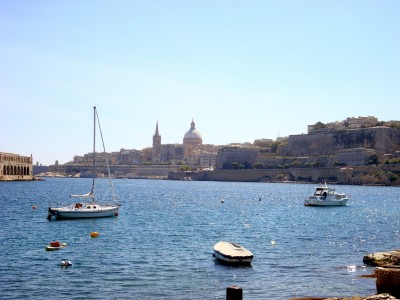
Well, we are finally back in the land of pork. Sounds kind of crazy, but a month in a Muslim country makes your mouth water at the thought of bacon even if you hardly ever eat it at home. Tunisia seemed surprisingly relaxed in terms of attitudes toward alcohol, but pork is not available anywhere, or at least not that we could find. But I get ahead of myself, again.
After three weeks of hard work in Monastir there were still a few things on the to-do list, but our weather window was narrowing. We had one last visit with Tom and Liz on Tuesday night, set the alarm for 5 a.m. and planned for a 6 a.m. departure for Malta on Wednesday. We woke to the sound of strong wind howling in the rigging and Bonnie poked her nose out from under the covers just long enough to announce that she was going back to sleep. But the grib files showed that if we didn't leave on Wednesday, we might not have favorable winds again for another seven days. After some hesitation and a few trips to the top of the headland to look at the waves, we finally set sail at 14:40, with a great send-off from the deck of Seraphina, where Francoise, Pascal and Serge were waving and tooting a horn. Actually, we powered out of the marina and directly into 15-20 knot headwinds and very lumpy seas. After about 15 miles, when we were well past Ile Kuriat, we were able to get our sails up and bear off. Ile Kuriat is a small island off Monastir, not much bigger than the lighthouse that stands on it, but it held some religious importance to Tunisians, probably related to the well of fresh water available there and a Marabou (tomb) on the island.
We had just a few hours of daylight left and thirty hours of sailing ahead of us, but it was almost a full moon, which is a pleasure on a night passage. The choppy seas were not the best circumstances for the first trip of the season and before long Bonnie started to feel a bit woozy. She bounced back after some sleep and although she did not feel "back to normal" until the seas smoothed out on Thursday morning, she did stand all her watches and kept smiling. This stretch of water crosses the route to and from the Suez Canal. It has a reputation for being busy and we expected lots of traffic, but in the end we only saw two ships, one sailboat, two dolphins and one turtle. I wonder if the lack of ships relates to the world recession, or maybe a bit of the uncertainty caused by those Somalian pirates. The turtle appeared very relaxed.
At around 6 p.m. we spotted the tall cliffs of Gozo, the second largest island of Malta's archipelago. The sun was setting and the shadows created by these cliffs and the spires and domes of the basilicas and other stately buildings made a beautiful sight as we cruised by. As we turned the corner and headed to Valetta the sun settled below the horizon and the lights on the shoreline became many and confusing. A quarter mile from the breakwater we had to check in with Valletta Port Control for permission to enter. This permission was given in a crisp and matter of fact manner which belied the fact that we could not see the entrance at all in all those lights. However, going slowly, using radar and the chart plotter, the entrance finally appeared and we crept past the fortifications surrounding Valetta to enter the harbour. Our intended destination was Msida Marina at Marsamxett harbour's head, but with no one answering our radio calls we had to wing it. We were relieved to spot a free berth and were able to Med moor, bow-to, without difficulty, all by ourselves . Rum colas were called for. It was pretty cool to be sitting under the fortifications that have been battled over for centuries. When we awoke in the morning the sites of Valletta took our breath away. The fortifications were even more extensive and grand than we had realized the night before. Couple this with the outstanding baroque architecture of the churches and auberges built by the Knights of St. John and it almost seems like a fairyland. And before we had taken even ten steps off the marina dock, we bumped into our friend Sandra, who promptly invited us for dinner that evening onboard Deep Blue (www.sailblogs.com/member/deepblue). After seven months of following their news from their blog, it was great to reconnect with Chris and Sandra and to meet Wayne and Angie, another cruising couple from the UK. Wayne is an artist and Angie does creative publishing.
We aren't the only ones who missed our bacon. Wayne mentioned that when they were wintering in Turkey they always knew when a cruiser had made a trip to Greece to take care of immigration formalities, from the smell of bacon wafting down the marina. Gotta run, we're off to the grocery store!
After three weeks of hard work in Monastir there were still a few things on the to-do list, but our weather window was narrowing. We had one last visit with Tom and Liz on Tuesday night, set the alarm for 5 a.m. and planned for a 6 a.m. departure for Malta on Wednesday. We woke to the sound of strong wind howling in the rigging and Bonnie poked her nose out from under the covers just long enough to announce that she was going back to sleep. But the grib files showed that if we didn't leave on Wednesday, we might not have favorable winds again for another seven days. After some hesitation and a few trips to the top of the headland to look at the waves, we finally set sail at 14:40, with a great send-off from the deck of Seraphina, where Francoise, Pascal and Serge were waving and tooting a horn. Actually, we powered out of the marina and directly into 15-20 knot headwinds and very lumpy seas. After about 15 miles, when we were well past Ile Kuriat, we were able to get our sails up and bear off. Ile Kuriat is a small island off Monastir, not much bigger than the lighthouse that stands on it, but it held some religious importance to Tunisians, probably related to the well of fresh water available there and a Marabou (tomb) on the island.
We had just a few hours of daylight left and thirty hours of sailing ahead of us, but it was almost a full moon, which is a pleasure on a night passage. The choppy seas were not the best circumstances for the first trip of the season and before long Bonnie started to feel a bit woozy. She bounced back after some sleep and although she did not feel "back to normal" until the seas smoothed out on Thursday morning, she did stand all her watches and kept smiling. This stretch of water crosses the route to and from the Suez Canal. It has a reputation for being busy and we expected lots of traffic, but in the end we only saw two ships, one sailboat, two dolphins and one turtle. I wonder if the lack of ships relates to the world recession, or maybe a bit of the uncertainty caused by those Somalian pirates. The turtle appeared very relaxed.
At around 6 p.m. we spotted the tall cliffs of Gozo, the second largest island of Malta's archipelago. The sun was setting and the shadows created by these cliffs and the spires and domes of the basilicas and other stately buildings made a beautiful sight as we cruised by. As we turned the corner and headed to Valetta the sun settled below the horizon and the lights on the shoreline became many and confusing. A quarter mile from the breakwater we had to check in with Valletta Port Control for permission to enter. This permission was given in a crisp and matter of fact manner which belied the fact that we could not see the entrance at all in all those lights. However, going slowly, using radar and the chart plotter, the entrance finally appeared and we crept past the fortifications surrounding Valetta to enter the harbour. Our intended destination was Msida Marina at Marsamxett harbour's head, but with no one answering our radio calls we had to wing it. We were relieved to spot a free berth and were able to Med moor, bow-to, without difficulty, all by ourselves . Rum colas were called for. It was pretty cool to be sitting under the fortifications that have been battled over for centuries. When we awoke in the morning the sites of Valletta took our breath away. The fortifications were even more extensive and grand than we had realized the night before. Couple this with the outstanding baroque architecture of the churches and auberges built by the Knights of St. John and it almost seems like a fairyland. And before we had taken even ten steps off the marina dock, we bumped into our friend Sandra, who promptly invited us for dinner that evening onboard Deep Blue (www.sailblogs.com/member/deepblue). After seven months of following their news from their blog, it was great to reconnect with Chris and Sandra and to meet Wayne and Angie, another cruising couple from the UK. Wayne is an artist and Angie does creative publishing.
We aren't the only ones who missed our bacon. Wayne mentioned that when they were wintering in Turkey they always knew when a cruiser had made a trip to Greece to take care of immigration formalities, from the smell of bacon wafting down the marina. Gotta run, we're off to the grocery store!
| Vessel Name: | Aisling I |
| Vessel Make/Model: | Slocum 43 |
| Hailing Port: | Halifax, NS, Canada |
| Crew: | Rick and Bonnie Salsman |
| About: | |
| Extra: | |
| Social: |
Aisling I's Photos - Aisling I (Main)
About Aisling 1
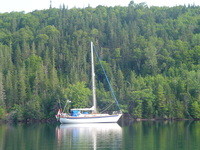
Who: Rick and Bonnie Salsman
Port: Halifax, NS, Canada
Quick Links
- Miscellaneous
- Greece-other
- Croatia and Montenegro 2012
- Sicily 2011-2014
- Italy (Mainland) 2012
- Weather and Technical
- Turkey
- Greece-Aegean
- Syracuse 2009
- Tunisia
- Malta
- Greece Ionian & Gulf of Corinth
- Sicily 2008
- Corsica and Sardinia
- Southern France
- Transatlantic part 2-Azores to Baiona
- Azores 2007
- South Spain & Balearics-2008
- South Spain & Gibraltar 2007
- Portugal 2007
- Atlantic Spain
- Transatlantic part 1-Halifax to Azores
- Previous Trips
- pre departure
- Show All Posts








